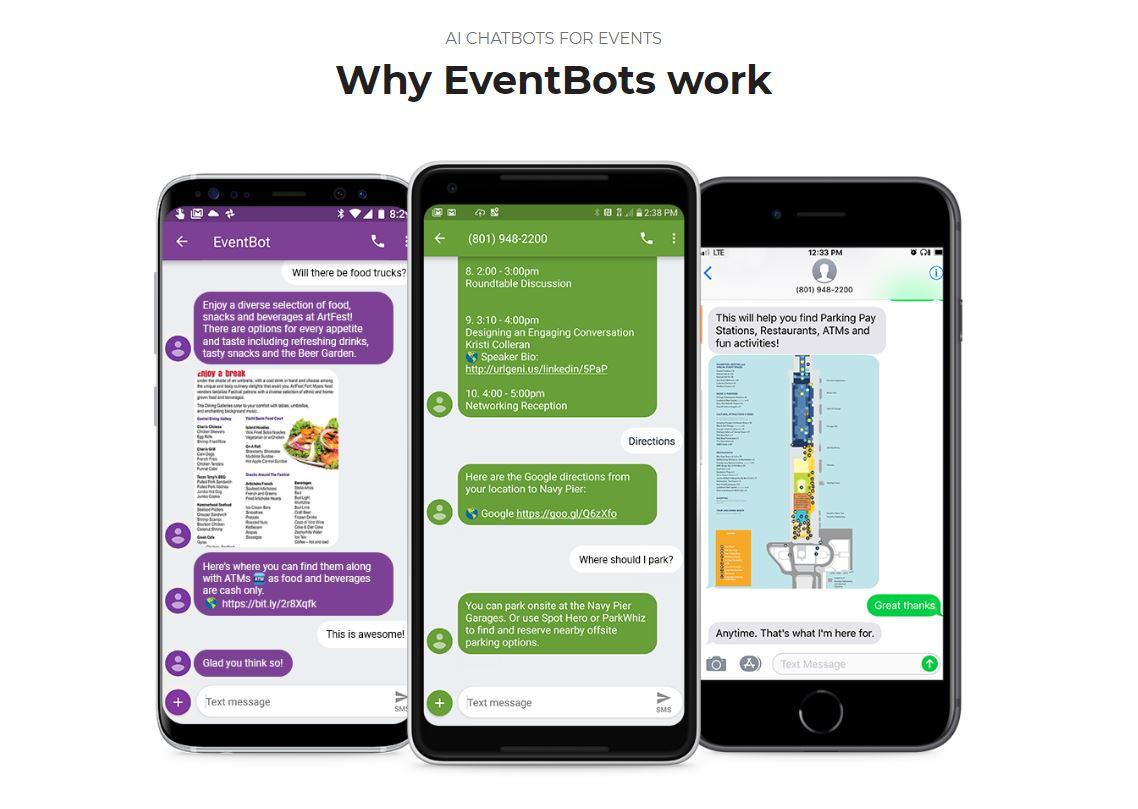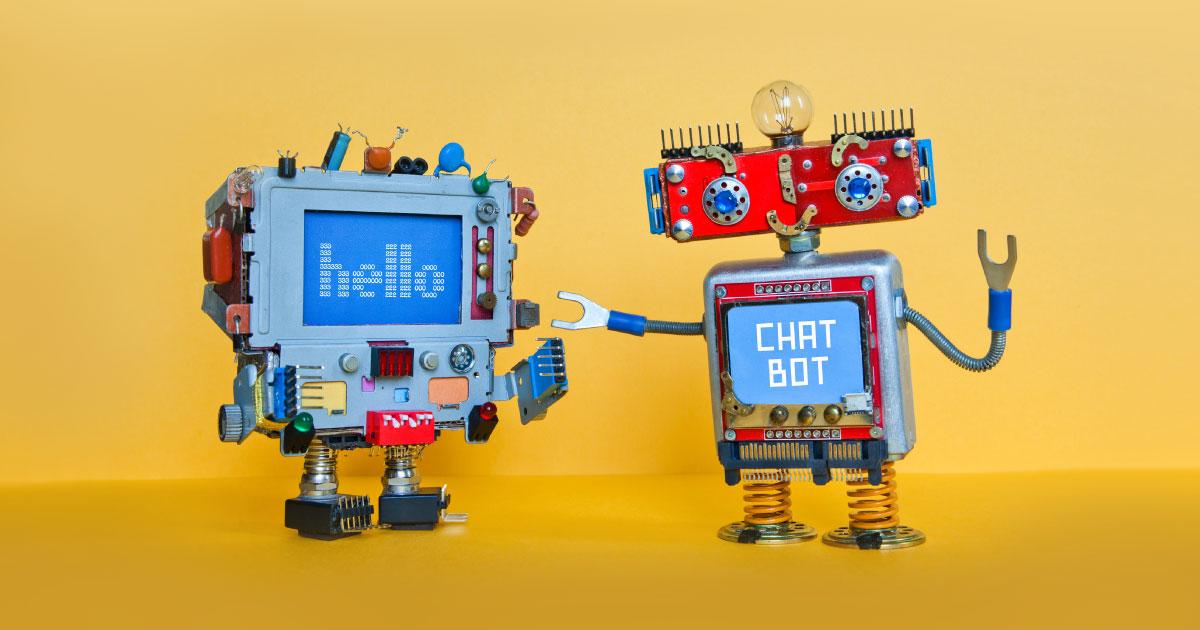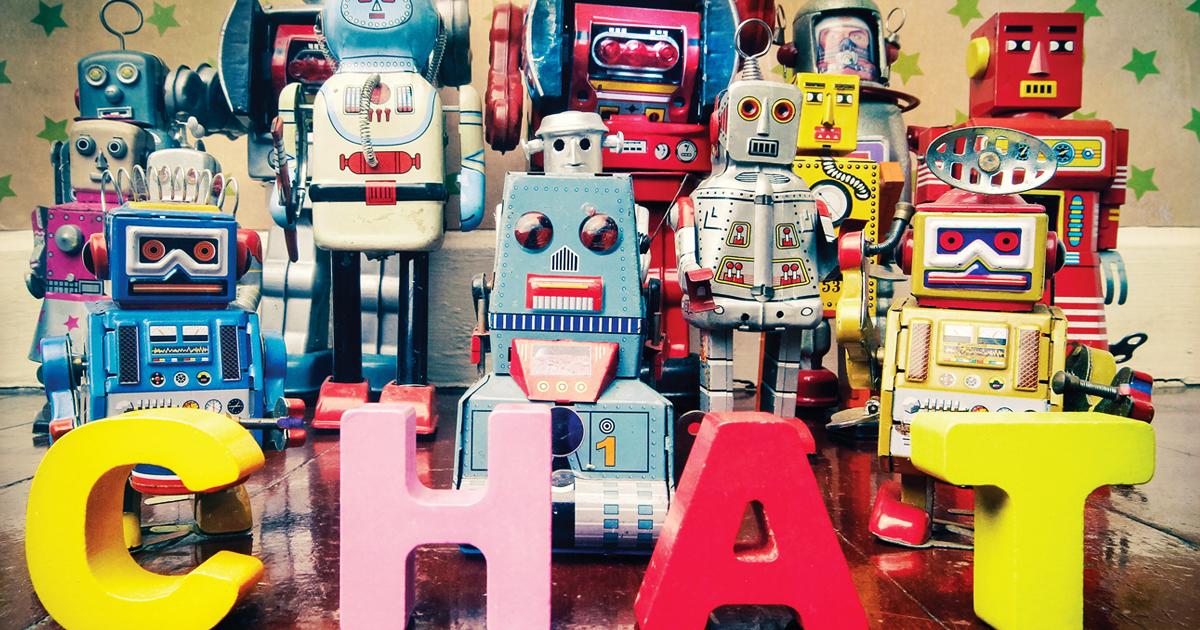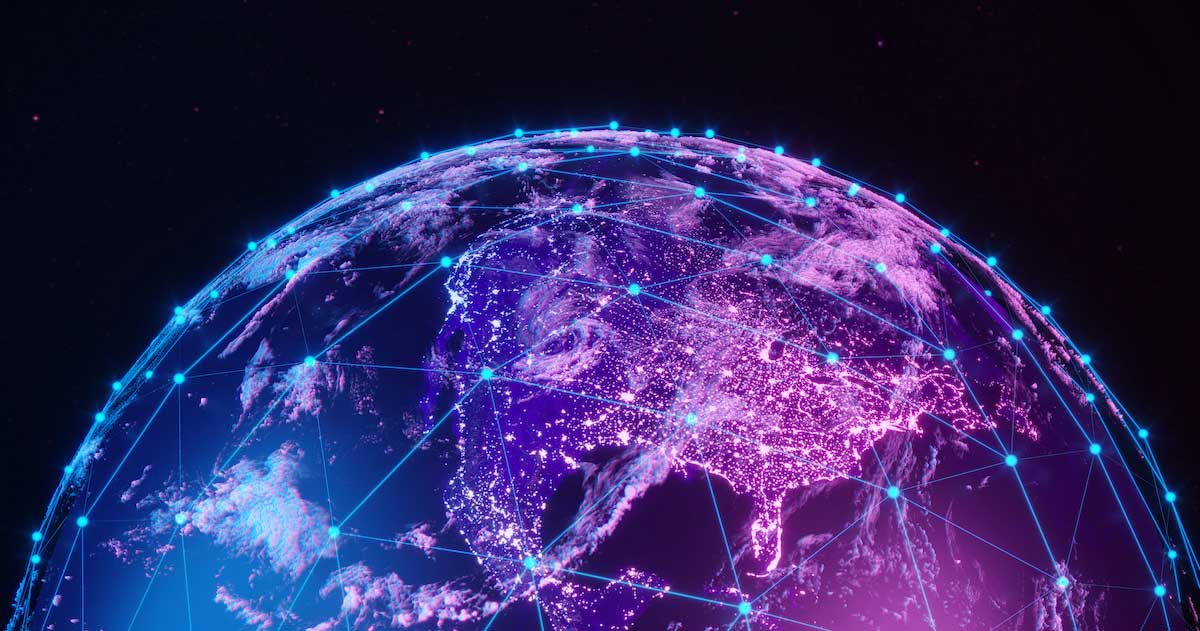Your attendees (and possibly staff) simply don’t read and remember all of the information you provide to them—information that they need to know while on site. People are lazy; planners are overworked. Chatbots can help.
The star of MPI’s 2018 World Education Congress (WEC) Tech Showcase this summer was EventBots, Sciensio’s meeting-and-event-specific chatbot system, which has been collecting accolades for the past two years.
In that time, EventBots has been recognized with numerous awards throughout the meeting and event industry: IMEX America #IMEXpitch 2017, SISO Event Innovation Battlefield 2017, IBTM World Technology Watch 2017, Event Tech Live Launchpad Finalist 2017, National Sports Forum Tech Tank 2018 and more.

A chatbot is software programmed to provide answers to human questions in a conversational manner. Sciensio’s chatbots do this primarily over SMS—that endemic phone text messaging that’s increasingly infiltrated our lives, especially over the past decade. The goal here is for chatbots to field the majority of questions you and your team members would normally receive from stakeholders. (For a simpler introduction to chatbots and to accommodate for space restrictions, herein, only attendees will be discussed as the users of chatbots, whereas, in reality, the chatbot service can be adjusted to cater to any group of people involved with your event.)
Human Laziness and the Quest for Answers
Have you seen attendees pick up a badge at registration, grab a conference bag stuffed with swag/printed material about the event and then proceed to, throughout the event, ask staff questions, the answers for which rest in the bag they’re carrying?
“At one event, when people came to the registration desk and got a bag, it included a map of the event. It didn’t even occur to [attendees] to look in the bag they were handed,” says Elizabeth Glau, CMP (MPI Oregon Chapter), client success manager, Sciensio. So, map-related queries fell to the overwhelmed onsite staff. “People need chatbots because they often can’t find or don’t even look in a bag to find a resource that has already been provided for them.”
Helping to provide answers while catering to increasing human laziness and/or lack of attention/concentration is one of the numerous ways in which chatbots can aid participants, but what about the planner side?
“Having an automated way to get those questions answered for attendees makes you more efficient—it frees up time—but I think the main benefit to the planner is that chatbots [can help] save your sanity,” Glau, a former planner, says bluntly. “How do you measure the value of you, the planner, having a better experience with the event? How would you measure that? That’s difficult to measure because it’s so emotional.”
Efficiency and less stress (ideally), that’s the heart of the chatbot promise. To be fair, the problem isn’t always blatant human laziness—we’re constantly overwhelmed with information, a development credited with shortening attention spans and perpetuating the conditioning to seek technological solutions.
Bob Caldwell, founding partner of Sciensio, says with EventBots planners are empowering people to query the data in their chosen “language.”
“It’s not just about answering a question accurately, it’s about solving the consumer’s problem with what we call a correct response,” Caldwell says. “In the simplest terms, if someone was to ask a bot, ‘Do you have Wi-Fi?’ an accurate answer could be ‘Yes.’ But that’s a useless answer, right? What they really want to know is, ‘What’s the network, what’s the password and is it free?’ When we build our bots, we include what we call ‘anticipatory design.’ We’re not just going to answer the question you ask, we’re going to answer the question you really mean to ask.”
And Sciensio’s full-featured chatbots boast a correct response rate greater than 93.5 percent—significantly better than the call center baseline rate of 80 percent accurate responses.
“At the end of the day, this is about satisfying the customers, it’s not about the gee-whiz-ness. If the bot doesn’t satisfy your customers, then why have the bot?” Caldwell says. “It’s like having volunteers [at your events]—if the volunteers aren’t well trained, why have them? Our average SMS response is less than three seconds—that’s quicker than talking to a volunteer, on average.”
Behind the Scenes
“From an organizational and technological perspective, the beautiful thing about the events space is the high-iteration rate,” Caldwell says. “We’re able to deploy a bot, put it up, run it, take it down, learn from it and do it again very quickly.”
Planners can even watch in real time as users submit questions to the chatbot—if a question is asked to which the bot hasn’t been programmed with a response, planners can even jump into the SMS conversation to ensure a correct and accurate answer.
“It becomes a central point of interaction and, one of the most powerful things is that you have a written record of every single question asked of the bot, even the ones it didn’t answer,” Caldwell says.
Chatbots are also constantly learning—as long as you continue to “feed” them. They learn from each and every event.

“Every time we do an event, we learn something new, we learn a synonym for something or a new way somebody might ask a chatbot for something,” Glau says, noting EventBots have been deployed to more than 200 events. “So every event we have, our chatbots get smarter, and our platform is built in such a way that we can apply what we learn at each event to every other chatbot that we build. We put our bots on a pretty short leash, so they don’t learn something they shouldn’t.”
In 1980s sci-fi terminology, that means you don’t have to worry about Skynet becoming sentient…at least, not yet. Even if the bots aren’t learning unrestrained by their human overlords, the people involved in the process are learning, and feeding those lessons back to the bots.
Thanks to a bank of evergreen questions/answers and everything the bots have learned from hundreds of deployments, the time investment from planners to set up a fully customized chatbot solution is less than you’d expect.
“We harvest all their data from websites, PDFs, etc., and we build the frame of a conversation,” Caldwell explains. “Then we have our first meeting with [planners] and ask them questions that aren’t in those publications. Over a six-to-eight-week period, the average client spends less than an hour a week working with us. And that’s for the first setup. [For subsequent events], the process gets even smoother.”
Sciensio has another option, as well—a just-launched self-service, code-free chatbot designed to be utilized for a one-day event. Planners fill out a basic informational packet and, if appropriate for the event, can have a chatbot up and running in less than 20 minutes, Caldwell says.
“Our self-service bot touches 25 different topic areas—you can ask about them over a million ways and it actually has an average correct response rate above 95 percent,” he says. “You can really deliver a robust tool that becomes almost like a team member for a meeting planner, and in so doing, really extend the power and functionality of the meeting planner because now they’re not going to be besieged by repetitive, non-value-add questions to which they’ve already provided the data.”
Societal Evolution and Adoption
“Anytime there’s a new technology shift, there’s some grumbling that comes from the old guard,” says Brandt Krueger, a Minnesota-based event tech speaker and expert who led a recent webinar for the Event Leadership Institute, “Chatbots in Meetings & Events.” “I like to keep my ear to the ground as far as what more senior-level, old school planners are doing. I’m hearing a lot of the same things I heard about event apps like five years ago: ‘Why would I need an event app, I already have a printed agenda?’ ‘It’s complicated, it’s more work for me.’ That’s the kind of vibe I’m getting on chatbots. I honestly think we’re going to see a similar trajectory, only faster, like we did with event apps.”

A major cause in the thus-far-realized, as well as anticipated, adoption of chatbots is the increasing human comfort interacting with computers for scenarios in which humans have always been the preferred resource.
“[Texting] used to be a small niche [of people] in their 20s, then that expanded to teens and 30s, now it’s pre-teens and 60s. It just keeps going up and up,” Krueger says. “People are used to this type of technology, that’s why I think it’s going to take off.”
With the prevalence of digital assistants in daily life—and the predictions of widespread adoption in the very near future—asking bots questions will increasingly be the preferred way we get answers. “Get it done quickly via the bot,” Krueger says.
Caldwell calls this shift the Alexafication of society (alternate phrasing referencing lazy human dystopian tales such as Idiocracy or Wall-E would be equally accurate).
“As a society, we have been trained to want instant answers to our questions—we don’t want to search very far, that’s why being on the second page of Google search results is the kiss of death. People don’t look that far, we’re lazy,” he says. “We want answers quickly and accurately and expect that in pretty much every situation.”
Sure, people like and even crave face-to-face interactions, perhaps more so in the meeting and event industry than others, but the bottom line is that people just want answers—if forgoing a human encounter means that info is delivered more quickly and more accurately, so be it.
“The beauty of text is that text has a 98 percent open rate,” Caldwell says. “I mean, I have face-to-face conversations that don’t have a 98 percent open rate.”
Chatbots will also help prepare planners/organizations for the evolving communication norms of future generations that, one way or another, will expect different ratios of human and computer interaction than those desired by Boomers, Gen Xers, Millennials and even the nascent Generation Z.
“In other industries, companies are trying to pass chatbots off as humans, but we believe strongly that we want attendees to know that it’s not a human, that it’s an automated program,” Glau says. “A lot of times [participants] will thank the bot, even though they know they’re not dealing with a person.”
Krueger sees some concerns with chatbots as analogous to those that arose during the initial rise of event apps.
“[We shouldn’t] look at chatbots as a replacement for humans,” Krueger says. “This is just another touch; it’s a way to make life more convenient for your attendees—if they want to avail themselves of it. Some of the resistance, I think, comes from our experience with phone trees—and that’s a nightmarish, miserable experience. I think people are worried whenever you take away the human touch. They say, ‘I’d much rather talk to a person,’ but I think if you gave them [a truth serum], they’d acknowledge, ‘I just want the answer.’ They don’t care if it comes from a person or a bot, as long as the answer comes quickly and easily.”
Test Drive a Chatbot
Want first-hand experience with a chatbot specifically built for the meeting and event industry? Engage with the live EventBots demo by texting “Demo” to 45426 or, for a web-based platform, visiting EventBots.com.







